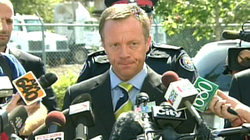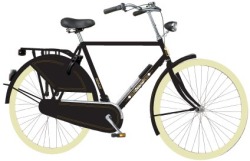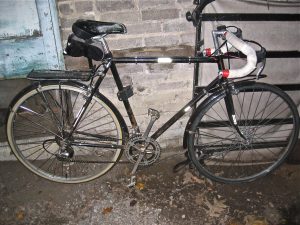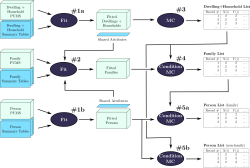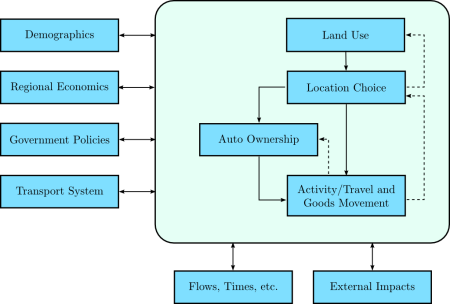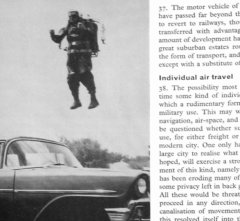I hope you don’t mind my descent into technobabble for a few moments.
The Toronto Star recently published an interesting article on demand management in the electricity sector in Ontario.
I go back to a speech that Paul Murphy, CEO of the Independent Electricity System Operator, gave back in January. He pointed out that of the 8,760 hours in all of 2006, peak electricity demand in the province only surpassed 25,000 megawatts for 32 hours. At its highest, it reached 27,005 megawatts last Aug. 1.
So we have two options: spend billions of dollars building and operating natural gas plants that can give us an extra 2,000 megawatts 32 hours of the year, or spend considerably less to pay companies that have promised to reduce their electricity consumption by 2,000 megawatts for those same 32 hours of the year.
Already, the government is paying organisations to reduce their demand momentarily during peak crunches. Loblaw grocery stores are cited as an example, and there are apparently aggregator companies that collect together users to create brief demand reductions during peak periods, in return for a payment.
This is not the conventional approach to either supply or demand management. Economists will argue that demand management is best achieved through price increases, not convoluted rebate schemes like the one discussed by this article. If prices fluctuate in response to changes in supply/demand and consumers can easily observe the price they will pay, then high prices during peak periods will automatically discourage consumers (like Loblaws) who don’t really need the power that badly. (Of course, a badly designed/regulated market can lead to manipulations – as California found out when Enron and others took advantage of flaws in its power market.)
That said, the rebate scheme seems to create a sort of two-tier pricing scheme: those who can reduce demand during peak periods effectively get a discount on their annual electricity consumption. Provided that the aggregator schemes allow anyone to join, then anyone can choose to receive the lower rate. Of course, the system may not be as flexible as variable prices, since aggregators probably sign long-term contracts with businesses/residents who are willing to reduce usage – so there’s no room to change your mind on a day-to-day basis. Mind you, given the catastrophic nature of a power grid overload, a bit of advance planning is reasonable. Overall, it’s probably still quite a bit less efficient than proper pricing, and I imagine it’s also susceptible to manipulation, but the idea is somewhat intriguing.
I find this interesting because peaked demand patterns are a central issue in many systems, including the transportation system. Like the power plants, we build our roads to serve peak demand, and are often left with large amounts of unused space during the off-peak. Is there a place, then, for this type of demand management in the transportation world? Suppose a municipal government faced two options: expanding a freeway (for several billion dollars), or reducing demand. Given the discretionary nature of many peak period trips – and particularly the discretionary nature of peak period mode choice – there is substantial potential for demand reduction.
Unfortunately, there is a key difference between the electricity system and the road system: monitoring. If a consumer signs a contract to reduce power consumption, an outside agent can observe the consumer’s home/office and ensure that power consumption was reduced during the peak period. The same does not apply for driving: if a comparable contract was signed to guarantee that a traveller did not drive during the peak period, there is no reasonable way for an outside agent to observe a person and ensure that s/he complied. The only mechanism that exists for ensuring compliance is removal of the driver’s license, which is far too blunt – it prevents off-peak driving completely.
In some ways, we treat the transit system as a sort of demand aggregator – we charge transit with attracting people off the roadways, and justify subsidies to transit on the basis of relieving peak demand on the roads (in addition to its many other roles, such as citybuilding or providing access to those unable to drive). And while it can have that effect, the connection between subsidising transit and reducing peak roadway demand can be somewhat indirect. The subsidy’s effect (improved transit service and lower fares) do influence travellers’ decisions, naturally, but those improvements can be indirect and fluctuate over time.
If there was a more subtle instrument – an “off-peak only” driver’s license, for example – then society could direct subsidies to individuals who choose to forego the right to drive at peak period, and potentially forego costly expansion of the road system. While this subsidy might sound like it would be expensive, it could be introduced simply as a price differential – a high price to obtain a “peak” driver’s license, and a low price to obtain an “off-peak” license.
For the moment, we have vehicle registration fees, which are a little more blunt as a policy instrument since they penalise all driving rather than simply charging for peak-period driving. Of course, given that society incurs a cost to provide infrastructure for off-peak driving, it is fair to charge some fee to all drivers – but the overbuilding of our roadways is probably more closely linked to peak period demand than off-peak demand.
There is already one extremely sensitive policy instrument: fluctuating parking fees, which have the advantage of adjusting according to local conditions, and varying throughout the day. However, the influence of parking fees can be reduced by other factors, such as bundling with housing or office space, subsidy by employers, and oversupply through municipal regulations.
At any rate, this is all just a brief thought experiment on my part, with no real research involved. I’ve never heard of any proposals for “off-peak licenses” before, but perhaps they warrant consideration.
 Many years ago, when Google first released Google Maps and revolutionized online mapping from the stagnant MapQuest era, I put together a few quick demos showing the Vancouver and Toronto transit maps. I’ve made a few updates over the years since then, but not much more. The Vancouver one is still quite popular – more popular than TransLink’s own map, to be honest – but other web gurus made better Toronto maps, such as the excellent one by Ian Stevens.
Many years ago, when Google first released Google Maps and revolutionized online mapping from the stagnant MapQuest era, I put together a few quick demos showing the Vancouver and Toronto transit maps. I’ve made a few updates over the years since then, but not much more. The Vancouver one is still quite popular – more popular than TransLink’s own map, to be honest – but other web gurus made better Toronto maps, such as the excellent one by Ian Stevens.